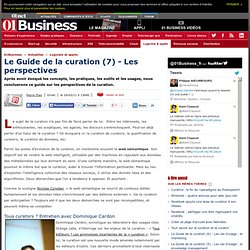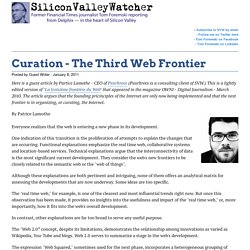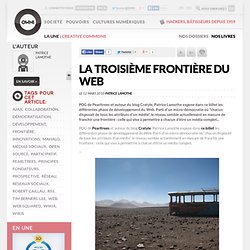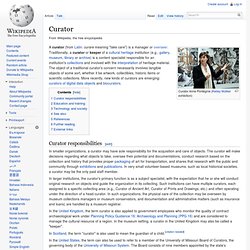

Interactive: Snake Oil? The scientific evidence for health supplements. See the data: bit.ly/snakeoilsupps.

See the static versionSee the old flash version Check the evidence for so-called Superfoods visualized. Note: You might see multiple bubbles for certain supplements. These is because some supps affect a range of conditions, but the evidence quality varies from condition to condition. For example, there’s strong evidence that garlic can lower blood pressure. This visualisation generates itself from this Google Doc. As ever, we welcome your thoughts, crits, comments, corrections, compliments, tweaks, new evidence, missing supps, and general feedback. » Purchase: Amazon US or Barnes & Noble | UK or Waterstones » Download: Apple iBook | Kindle (UK & US) » See inside.
La curation c'est de la merde. J’aurais pu écrire m€46€, j’aurais pu être subtil, j’aurais pu essayer d’être plus consensuel mais ce ne doit pas être dans mon “ADN” … Mais finalement en utilisant le mot de Cambronne je reste finalement très soft par rapport au fond de ma pensée.

Curation par-ci, curation par-là. On se demande juste si c’est du nez dont on parle ou bien du fond d’un endroit où finit justement souvent la dite matière. Je ne reviendrai pas sur le terme. En français il est assez laid et en anglais je n’ai même pas envie de savoir d’où il a émergé…
Le Guide de la curation (7) - Les perspectives. 01net le 24/03/11 à 13h00 Le sujet de la curation n’a pas fini de faire parler de lui.

SXSW blog, day three: Meet the curators. Ushahidi. An error occurred. Curation - The Third Web Frontier. Posted by Guest Writer - January 8, 2011 Here is a guest article by Partice Lamothe - CEO of Pearltrees (Pearltrees is a consulting client of SVW.)

This is a lightly edited version of "La troisième frontière du Web" that appeared in the magazine OWNI - Digital Journalism - March 2010. The article argues that the founding pricinciples of the Internet are only now being implemented and that the next frontier is in organizing, or curating, the Internet. By Patrice Lamothe Everyone realizes that the web is entering a new phase in its development. One indication of this transition is the proliferation of attempts to explain the changes that are occurring. Although these explanations are both pertinent and intriguing, none of them offers an analytical matrix for assessing the developments that are now underway. The "real time web," for example, is one of the clearest and most influential trends right now. In contrast, other explanations are far too broad to serve any useful purpose.
La troisième frontière du Web » Article » OWNI, Digital Journalism. PDG de Pearltrees et auteur du blog Cratyle, Patrice Lamothe expose dans ce billet les différentes phase de développement du Web.

Parti d'un micro-démocratie où "chacun disposait de tous les attributs d'un média", le réseau semble actuellement en mesure de franchir une frontière : celle qui vise à permettre à chacun d'être un média complet... A short history of curation. Curator. Curator responsibilities[edit] In smaller organizations, a curator may have sole responsibility for the acquisition and care of objects.

The curator will make decisions regarding what objects to take, oversee their potential and documentations, conduct research based on the collection and history that provides proper packaging of art for transportation, and shares that research with the public and community through exhibitions and publications. In very small volunteer-based museums, such as local historical societies, a curator may be the only paid staff member. In larger institutions, the curator's primary function is as a subject specialist, with the expectation that he or she will conduct original research on objects and guide the organization in its collecting. Such institutions can have multiple curators, each assigned to a specific collecting area (e.g., Curator of Ancient Art, Curator of Prints and Drawings, etc.) and often operating under the direction of a head curator.
Managing Content Through Curation. Nation Performing Arts Convention. Like e-mail in the ‘90s and the web at the dawn of the new millennium, artists and organizations—as a matter of business—have had to adapt to these new modes of communication and integrate these tools into their operations. Web 2.0 and social platforms like Digg and Delicious, YouTube, Flickr, and Facebook have pushed the electronic envelope even further up the learning curve. Along comes Twitter, and the real-time revolution is on—just as mobile technologies have gone viral. The speed of new development presents challenges—for technologists and luddites alike.
But whether you’re a traditionalist or a ‘new mediaist,’ [1] future audiences are growing up with these technologies, [2] and eventually, the arts, like every living thing, must adapt or die. Social media is where the jobs will be. New jobs mean new roles and new responsibilities. “Managing communities is much more complex than traditional outreach,” Levy added.
Meet the curators. They talk about curation! Conférence : Curation, l'avenir du web?